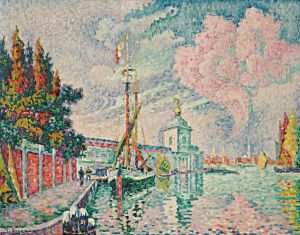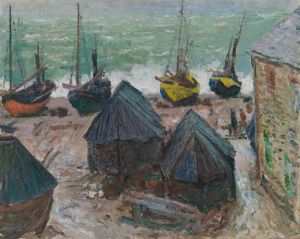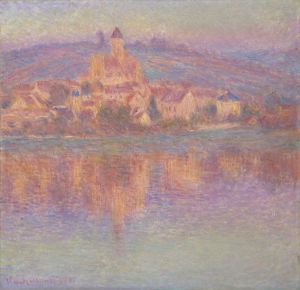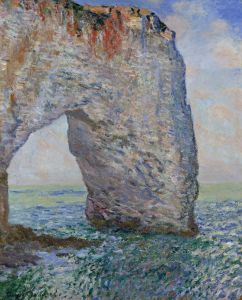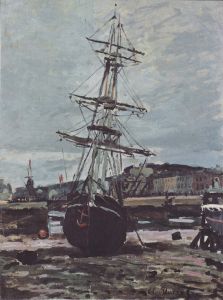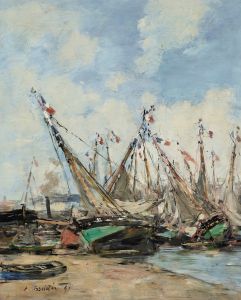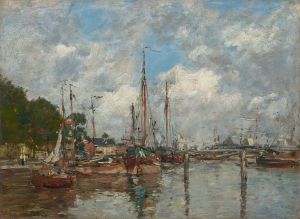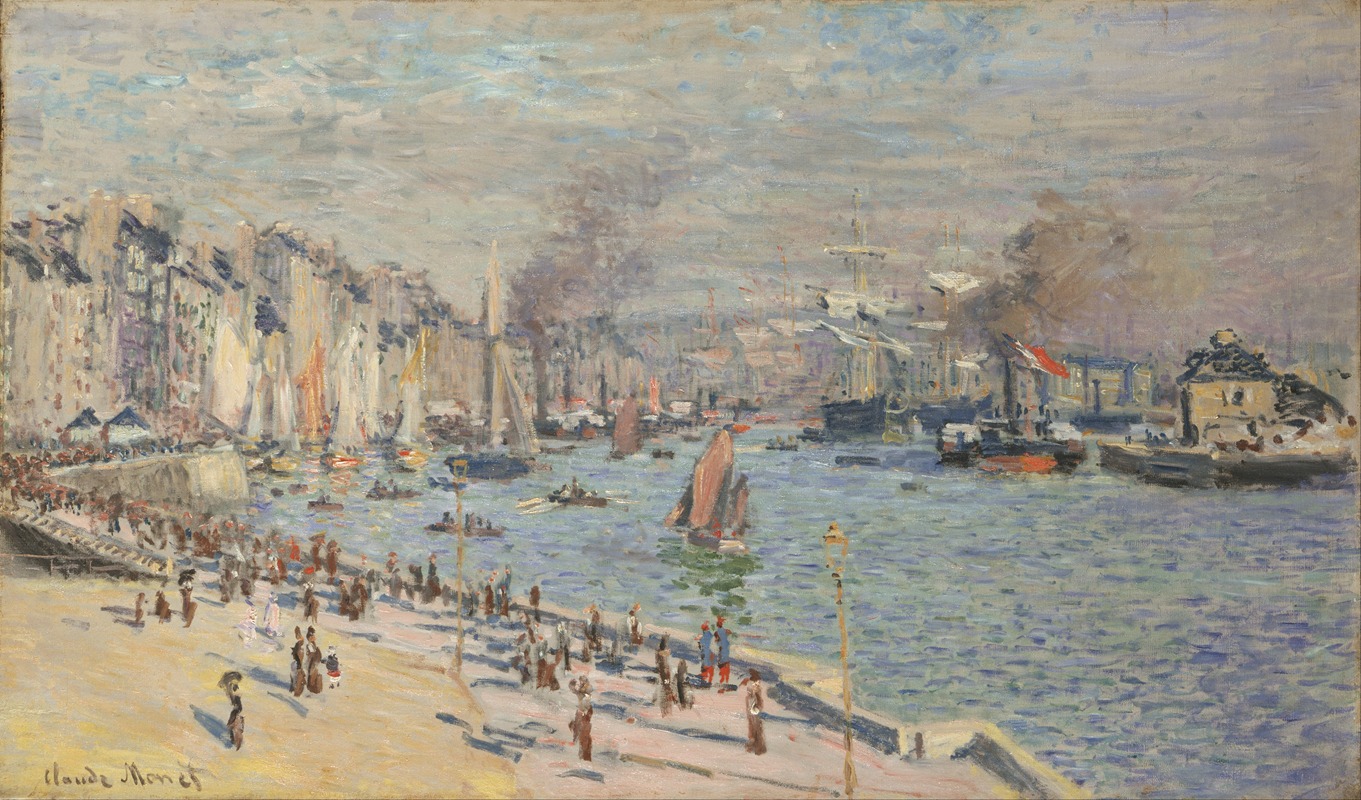
Port of Le Havre
A hand-painted replica of Claude Monet’s masterpiece Port of Le Havre, meticulously crafted by professional artists to capture the true essence of the original. Each piece is created with museum-quality canvas and rare mineral pigments, carefully painted by experienced artists with delicate brushstrokes and rich, layered colors to perfectly recreate the texture of the original artwork. Unlike machine-printed reproductions, this hand-painted version brings the painting to life, infused with the artist’s emotions and skill in every stroke. Whether for personal collection or home decoration, it instantly elevates the artistic atmosphere of any space.
"Port of Le Havre" is a painting by the renowned French artist Claude Monet, who is widely recognized as a leading figure in the Impressionist movement. Monet's work is celebrated for its innovative approach to capturing light and atmosphere, and "Port of Le Havre" is a testament to his skill in these areas.
Claude Monet was born on November 14, 1840, in Paris, France, and he spent much of his early life in the coastal city of Le Havre. This city, located in the Normandy region of France, played a significant role in Monet's artistic development. The bustling port of Le Havre, with its dynamic interplay of light and water, provided Monet with a wealth of inspiration and subject matter.
"Port of Le Havre" is one of Monet's early works, painted in the 1870s. During this period, Monet was beginning to develop the style that would later be known as Impressionism. This style is characterized by loose brushwork, an emphasis on the effects of light, and a focus on capturing a moment in time. Monet's choice of subject matter often included landscapes, seascapes, and scenes of everyday life, all of which are evident in this painting.
The painting depicts the port of Le Havre, a vital hub of commerce and trade. Monet's composition captures the essence of the port, with its ships, docks, and the bustling activity of the harbor. The artist's use of color and light is particularly noteworthy, as he skillfully conveys the atmosphere of the port at a specific time of day. The interplay of light on the water and the sky is rendered with Monet's characteristic attention to detail and his ability to evoke a sense of immediacy.
Monet's technique in "Port of Le Havre" involves the use of short, quick brushstrokes, which create a sense of movement and vibrancy. This approach allows the viewer to experience the scene as if they were standing alongside the artist, witnessing the transient effects of light and weather. The painting exemplifies Monet's interest in capturing the fleeting moments of everyday life, a hallmark of the Impressionist movement.
Throughout his career, Monet returned to the theme of ports and harbors, painting similar scenes in other locations such as Argenteuil and London. However, "Port of Le Havre" holds a special significance due to its connection to Monet's early life and artistic development. The painting not only reflects Monet's personal history but also serves as an important example of his evolving style during the formative years of Impressionism.
In summary, "Port of Le Havre" by Claude Monet is a significant work that showcases the artist's early exploration of light, color, and atmosphere. The painting captures the essence of the bustling port city that played a crucial role in Monet's life and artistic journey. Through his innovative techniques and keen observation, Monet offers viewers a glimpse into the vibrant world of 19th-century Le Havre, solidifying his place as a master of Impressionism.





